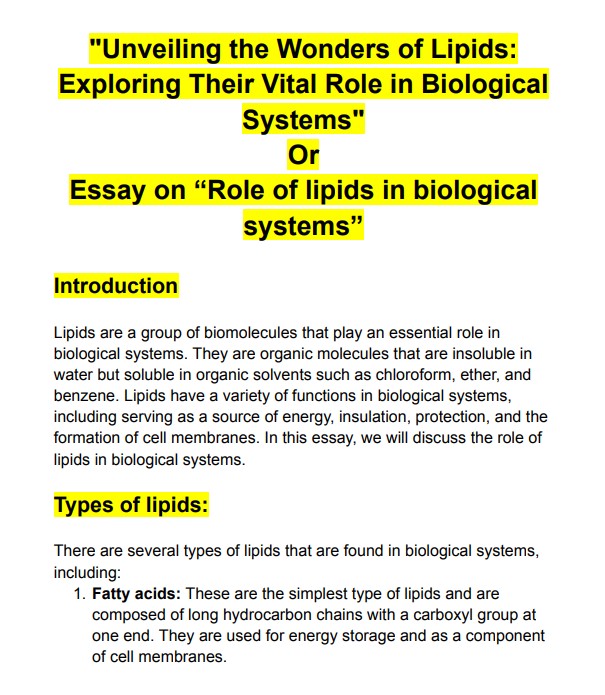The Vital Role of Lipids in Biological Systems
Summary:
This The Vital Role of Lipids in Biological Systems note discusses the role of lipids in biological systems. Lipids are a group of organic molecules that serve various functions in the body, such as energy storage, insulation, protection, and the formation of cell membranes. They also play a role in signalling, hormone production, vitamin absorption, and brain function. The essay describes the different types of lipids and their functions and highlights the importance of lipids in cellular membranes. It also discusses how lipids are involved in diseases such as cardiovascular disease, obesity, diabetes, and Alzheimer’s disease. Understanding the role of lipids in biological systems is crucial for developing treatments for these diseases and improving human health.
Excerpt:
The Vital Role of Lipids in Biological Systems
Introduction
Lipids are a group of biomolecules that play an essential role in biological systems. They are organic molecules that are insoluble in water but soluble in organic solvents such as chloroform, ether, and benzene. Lipids have a variety of functions in biological systems, including serving as a source of energy, insulation, protection, and the
formation of cell membranes. In this essay, we will discuss the role of lipids in biological systems.
Types of lipids:
There are several types of lipids that are found in biological systems, including:
1. Fatty acids: These are the simplest type of lipids and are composed of long hydrocarbon chains with a carboxyl group at one end. They are used for energy storage and as a component of cell membranes.
2. Triglycerides: These are composed of three fatty acid molecules bonded to a glycerol molecule. They are the main form of energy storage in the body.
3. Phospholipids: These are composed of a glycerol molecule, two fatty acids, and a phosphate group. They are the main component of cell membranes.
4. Steroids: These are composed of four fused carbon rings with various functional groups attached. They are involved in several physiological processes, including the regulation of growth and development and the maintenance of fluidity in cell membranes.


Reviews